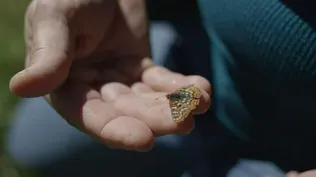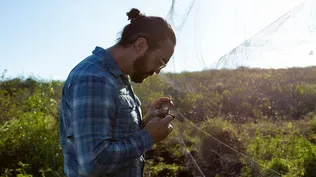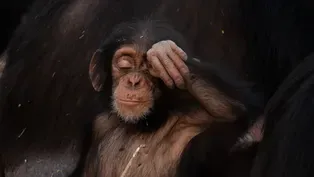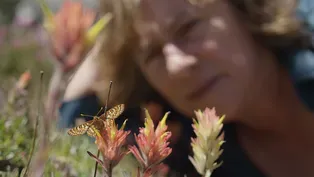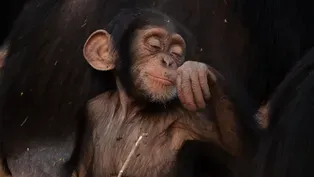
The Marine Iguanas' Unusual Shrinking Adaptation
Clip: Episode 1 | 10m 42sVideo has Closed Captions
Greg Lewbart is catching marine iguanas to study their unusual shrinking adaptation.
On the Galápagos Islands, Greg Lewbart and his team are trying to catch a marine iguana. Their goal is to study the iguana’s unusual adaptation. They have evolved the ability to shrink and regrow their vertebrae in response to changes in food availability. These conditions arises when the Pacific Ocean that is home to the algae they feed on warms, a result of the weather system known as El Niño.

The Marine Iguanas' Unusual Shrinking Adaptation
Clip: Episode 1 | 10m 42sVideo has Closed Captions
On the Galápagos Islands, Greg Lewbart and his team are trying to catch a marine iguana. Their goal is to study the iguana’s unusual adaptation. They have evolved the ability to shrink and regrow their vertebrae in response to changes in food availability. These conditions arises when the Pacific Ocean that is home to the algae they feed on warms, a result of the weather system known as El Niño.
How to Watch Evolution Earth
Evolution Earth is available to stream on pbs.org and the free PBS App, available on iPhone, Apple TV, Android TV, Android smartphones, Amazon Fire TV, Amazon Fire Tablet, Roku, Samsung Smart TV, and Vizio.
Buy Now
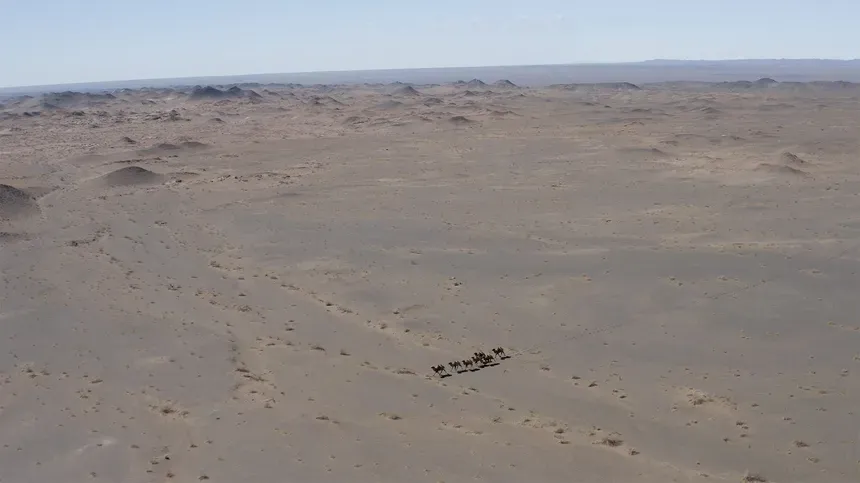
Evolution Earth
Traveling to the far corners of the world, we discover the extraordinary ways animals are adapting to our rapidly changing planet. We witness nature’s remarkable resilience, as our perception of evolution and its potential is forever transformed. Read these interviews with experts to learn more.Providing Support for PBS.org
Learn Moreabout PBS online sponsorship♪ Our crew headed out to the remote Galápagos Islands in the Pacific Ocean, and you can't go somewhere on our planet more closely linked to the story of evolution and change.
The whole place is just weird.
It's about as close as you can get on planet Earth to, like, a Dr. Seuss book basically.
♪ It was observing the crazy diversity of life here that led to Charles Darwin's revolutionary theory of evolution, and one animal here is doing something so weird, it's surprising scientists all over again.
Darwin didn't care much for these iguanas.
"Imps of darkness," he called them.
♪ [waves crashing] Now, I work with lizards, and Darwin thought they were pretty ugly, but I beg to disagree.
I would dare to say that these are quite the sexy reptile.
With little to eat on these barren volcanic rocks, Darwin noticed back in the day that these iguanas do something you wouldn't expect.
They swim in the sea.
You know, no other lizard on Earth does this.
♪ God, I love marine iguanas.
♪ I mean, this is one hell of a commute for lunch.
♪ That's a grinder, man.
♪ Look at him like a sea dragon, just doing his thing.
Incredibly, over millions of years, these guys have evolved to graze underwater on algae... and they're sporting some pretty awesome powers.
Sharp claws... razor teeth... strong tails, and the ability to hold their breath for up to an hour, and if that isn't enough, these waters are ridiculously cold, and as a lizard expert, I can tell you that's not good for a coldblooded reptile.
Down too long, and he'll die of hypothermia.
♪ The trip home is no walk in the park either.
Now, Darwin realized these iguanas are living on the edge of survival.
They're so finely adapted to their environment... ♪ but recently, researchers discovered something even more weird and wonderful... and here's the twist.
These iguanas can shrink.
[man] When I first heard about shrinking iguanas, I didn't believe it.
I mean, I was very-- let's say I was very skeptical, and I thought, "Oh, someone's pulling my leg."
That's just soundcheck stuff, right?
[man two] Yeah.
That's good.
That's the whole thing.
Ooh.
Man, that was a lot of build-up for that.
[Shane] Veterinary biologist Greg Lewbart and his team are following in the footsteps of the scientists who first made the discovery.
[Greg] Yeah, they're pretty fast.
On the flat, I think I could outrun one--ha-- but on the rocks, no way.
First of all, we're on their home turf, right?
So once they get on the slippery stuff, they're--they're home free.
Oh, it's here?
Oh, I see it.
Got him.
[Shane] See that body sacrifice right there?
I got him.
Yep.
That's what biology's all about.
[woman] Ha ha ha!
Are you OK?
[Greg] Yeah.
[Shane] Teamwork makes the dream work.
[Greg] Yeah, so that's a nice--looking-- looks like male, huh?
This is Amblyrhynchus cristatus godzilla, and I think you can see how it gets the name.
[Shane] Oh, look at that little pudger.
Oh, he's so pudgy.
[man] You grab his tail, I'll grab his hips.
[Greg] I'm gonna give it to you, Alyssa.
Yeah, and just watch the nails.
I'm gonna stretch out his little chin.
I got that.
So we are at 470 millimeters.
[Shane] When researchers measure the iguanas, a pattern becomes clear.
[thunder rumbling] The ones that shrink do so after El Niño.
[thunder rumbling] ♪ This cyclical weather event gives rise to intense storms and warmer seas... ♪ that strip rocks of the iguanas' food.
♪ 90% of the entire population can starve to death.
[thunder rumbling] The ones that shrink are the ones that are more likely to survive... and there's another twist.
Turns out these iguanas can also grow again.
[Greg] Think about an accordion, the musical instrument.
There's less food, and the marine iguana starts to shrink to survive.
Then, if it can hang on until the algae comes back, then it's like an iguana buffet, and this iguana grew again.
So it's sort of like a-- like a vertebral accordion.
[Shane] Yeah, he's really saying their spines can shrink and grow.
[Greg] But we're not really sure how they do it.
[Shane] So Greg's taking a new approach.
[Greg] We'll get gloves on for this one.
We're gonna set the iguana up on our little iguana x-ray platform.
He's gonna be a good boy.
[Shane] I love this.
[Greg] 3, 2, 1, back away.
[Shane] He's brought an x-ray machine to the beach.
[Greg] Wow.
[man] What do you think?
That is amazing.
Pretty good for x-rays in the field, yeah?
Pretty good?
I'd say a dream image.
I mean, it's just striking.
[Shane] Greg's testing a theory that the way the iguanas change size is by reabsorbing bone and then growing it back again.
[Greg] So if you have about 18 backbone vertebrae and each one shrinks even a millimeter, that's almost two centimeters, which is almost an inch.
[Shane] As far as I'm concerned, that's one of the craziest superpowers in nature.
To confirm how it works, Greg just needs to take a whole lot more x-rays, and you can sign me up now.
That's the kind of fieldwork I could do forever.
[Greg] I think if we could talk to Darwin tonight at dinner and tell him that marine iguanas can shrink, I think he'd be surprised, and he might say, "You ought to take some x-rays."
Ha ha ha!
Except they didn't have x-rays in 1835.
[Shane] It's possible marine iguanas can shrink in the space of just a few months, a rapid response that's increasingly vital in the face of climate change.
♪
Chimpanzees Dig for Fresh Water
Video has Closed Captions
The Fongoli troop of chimpanzees dig to find fresh water in a parched Senegal savanna. (2m 59s)
The Edith's Checkerspot Butterflies and Climate Change
Video has Closed Captions
Camille Parmesan tells us how the climate sensitive Edith's Checkerspot helped NASA. (2m 56s)
Video has Closed Captions
Animals have a surprising story to tell about our rapidly changing planet. (30s)
Providing Support for PBS.org
Learn Moreabout PBS online sponsorship